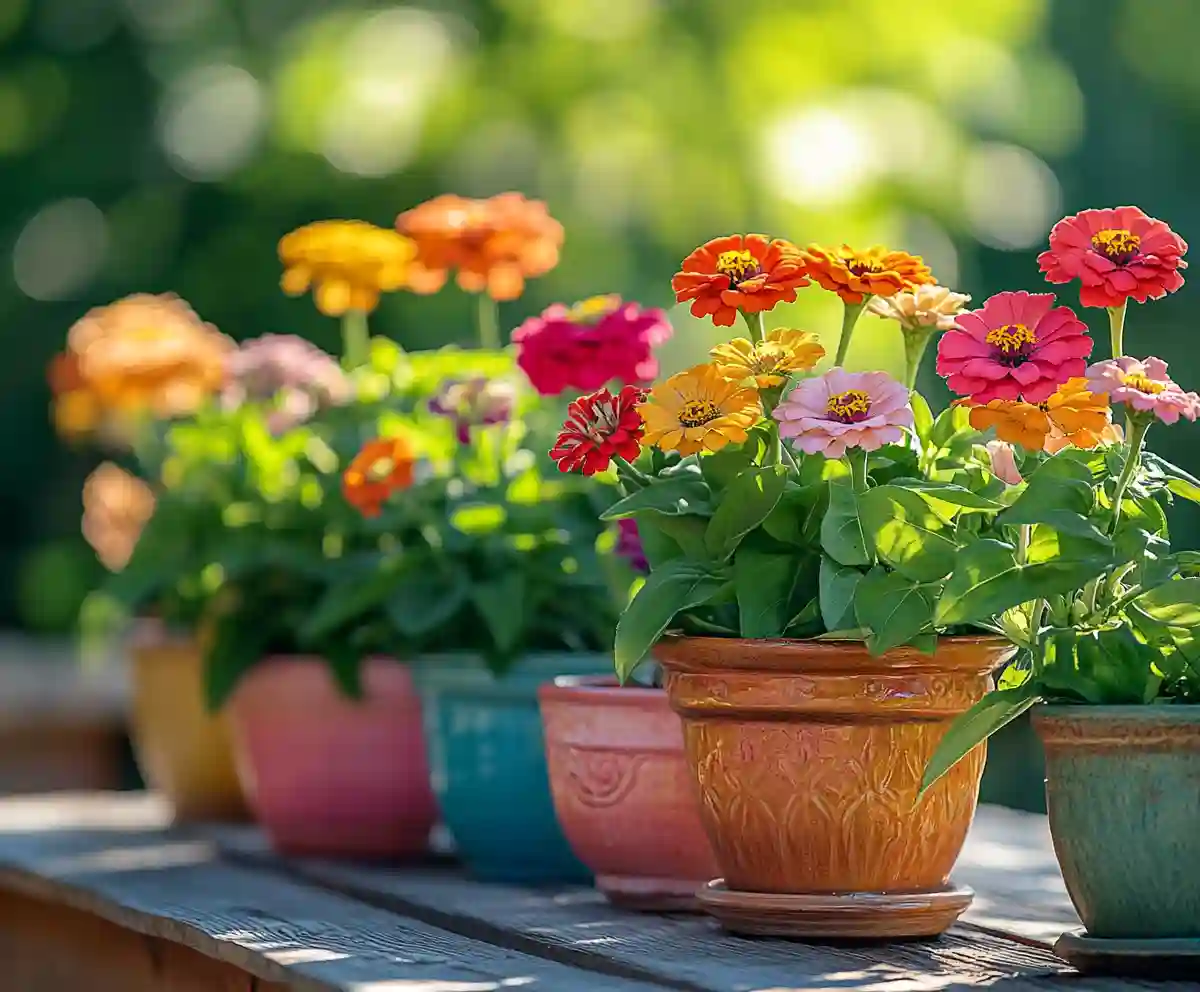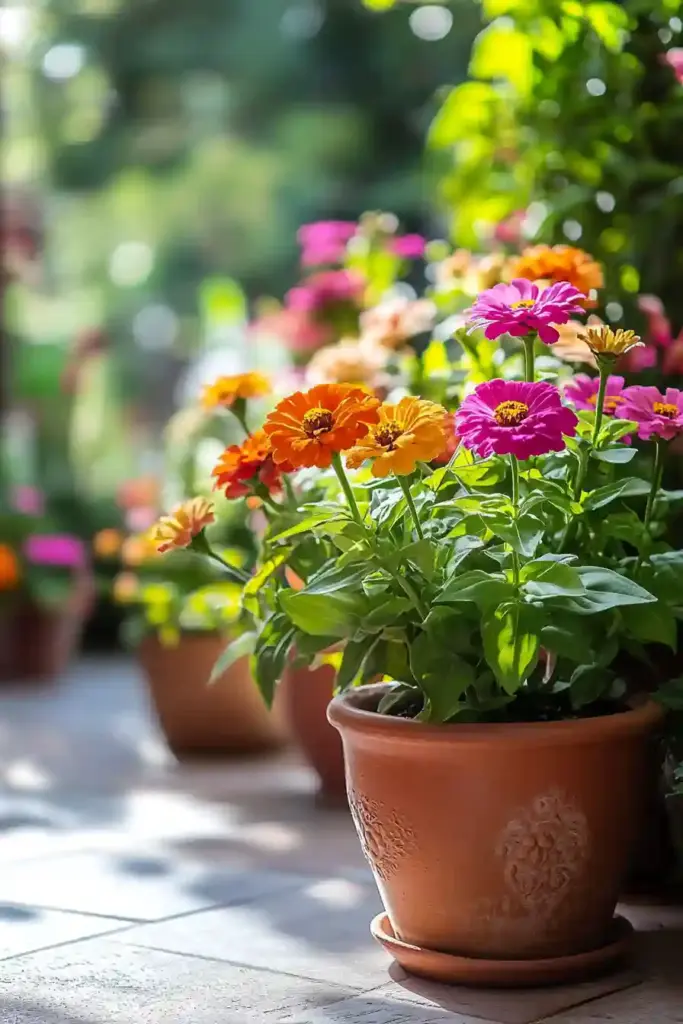Zinnias are famously unfussy, but if you want lush blooms and healthy plants, it all starts with what you plant them in—and where you place them.
🌱 The Best Soil for Zinnias in Pots
- Use potting mix—not garden soil
Garden soil can be too dense and doesn’t drain well in containers. Choose a light, well-draining potting mix designed for flowers or vegetables. - Avoid moisture-retaining mixes
While you want soil that holds some water, overly soggy mixes can lead to root rot. - Enhance with organic matter
Mix in compost or aged leaf mulch to add nutrients and improve drainage. - Optional boost:
Add a handful of bone meal at planting time for stronger roots and vibrant blooms.
💡 Tip: Don’t reuse old potting soil from previous years unless it’s been refreshed or sterilized — it could carry disease or pests.
☀️ Sunlight Needs
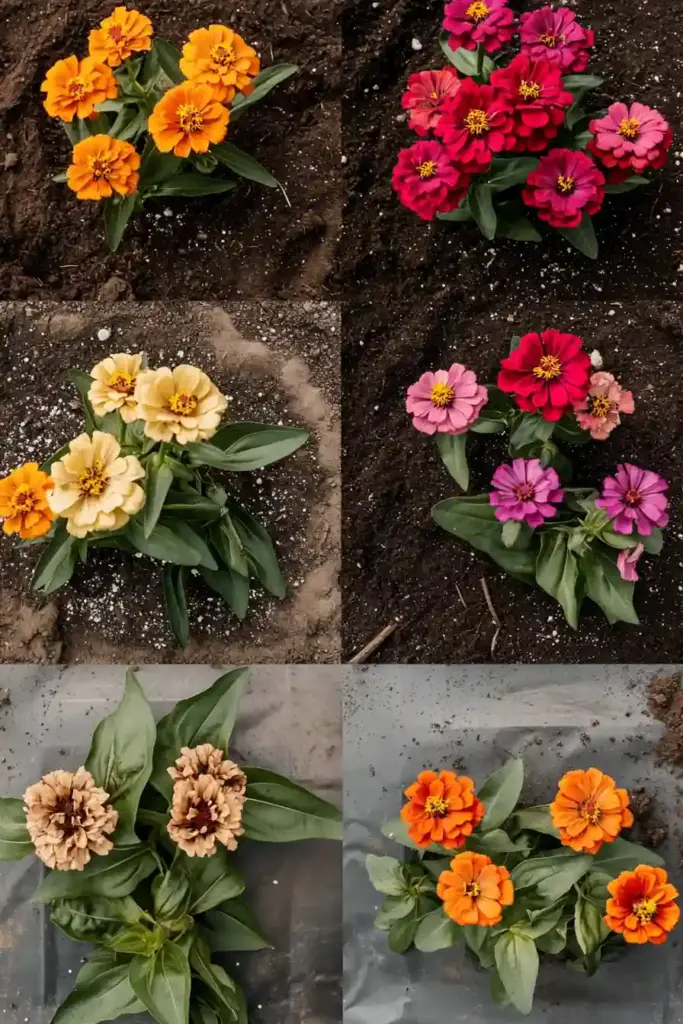
Zinnias are true sun lovers. They need:
- At least 6–8 hours of full sun daily
Place your pots in the sunniest spot you have — think patios, porches, or balcony corners that get steady midday light. - Afternoon shade is okay, but don’t overdo it. Too much shade = fewer blooms and leggy, stretched-out plants.
🚫 If your zinnias aren’t blooming well or look lanky, they’re probably not getting enough sunlight.
Proper soil and full sunlight are the two most important factors in setting up your zinnias for success. Up next, we’ll dig into how to water and feed them for peak performance.
💧 Watering and Fertilizing Zinnias in Pots

Zinnias are low-maintenance, but like most container plants, they rely on you to provide consistent moisture and occasional feeding. Let’s break it down.
💦 How to Water Potted Zinnias
Zinnias prefer a deep drink followed by a dry spell — no soggy feet here!
✅ Watering Tips:
- Water deeply until you see water draining from the bottom.
- Then, let the top 1–2 inches of soil dry out before watering again.
- Always water at the base of the plant — not over the leaves — to prevent fungal diseases like powdery mildew.
- During hot spells or dry winds, you may need to water once a day (especially in small pots).
🌡️ Container plants dry out faster than those in the ground, so check your soil daily during summer heat.
🌿 Fertilizing Zinnias in Pots
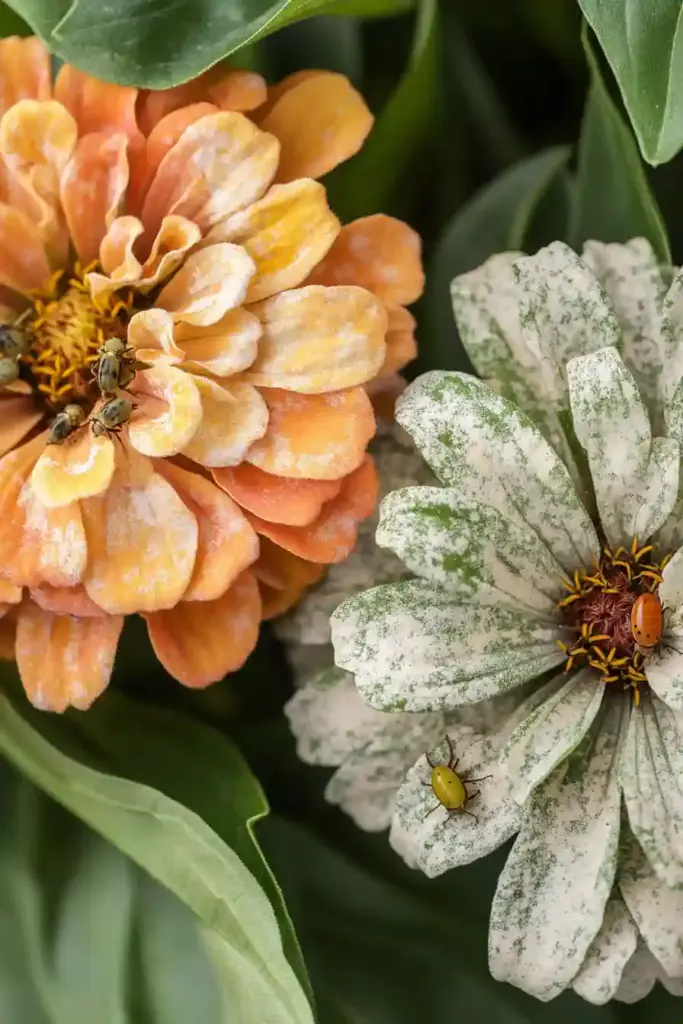
Zinnias don’t demand a lot of fertilizer, but a gentle boost can encourage more blooms.
🌸 Fertilizing Guidelines:
- Use a balanced flower fertilizer (like 10-10-10 or 5-10-5) every 3–4 weeks once the plant is established.
- Avoid high-nitrogen fertilizers — they’ll encourage leafy growth at the expense of flowers.
- You can also mix slow-release fertilizer granules into the potting mix at planting time for steady nutrition.
💡 Bone meal, added when planting, gives a great foundation for strong root and flower development.
Now that your plants are well-fed and hydrated, let’s look at how deadheading can keep your zinnias blooming non-stop.
✂️ Deadheading for More Blooms
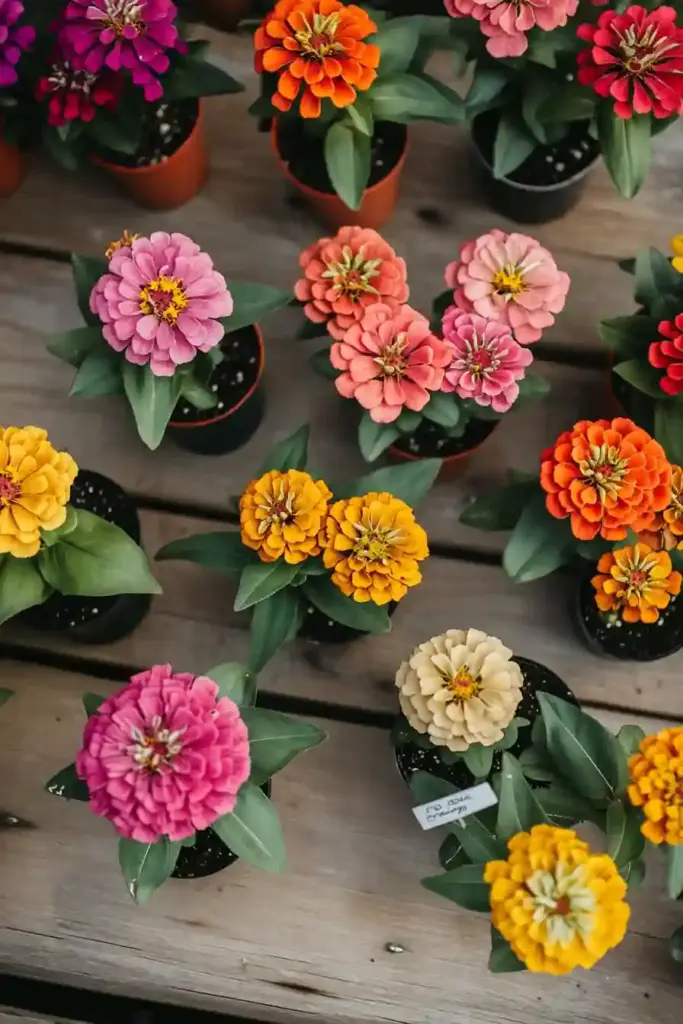
Zinnias are known as “cut-and-come-again” flowers — and it’s true! The more you remove spent blooms, the more the plant will produce. This simple task is the secret to a continuous explosion of color.
🌸 Why Deadheading Matters
- Encourages new flower production
When a zinnia finishes blooming, the plant naturally starts to set seed. Deadheading redirects that energy back into new buds instead of seed production. - Keeps the plant tidy and lush
Removing old, faded flowers helps maintain a neat appearance and reduces the risk of disease. - Promotes longer bloom time
With consistent deadheading, zinnias can bloom from midsummer until the first frost!
📝 How to Deadhead Zinnias in Pots
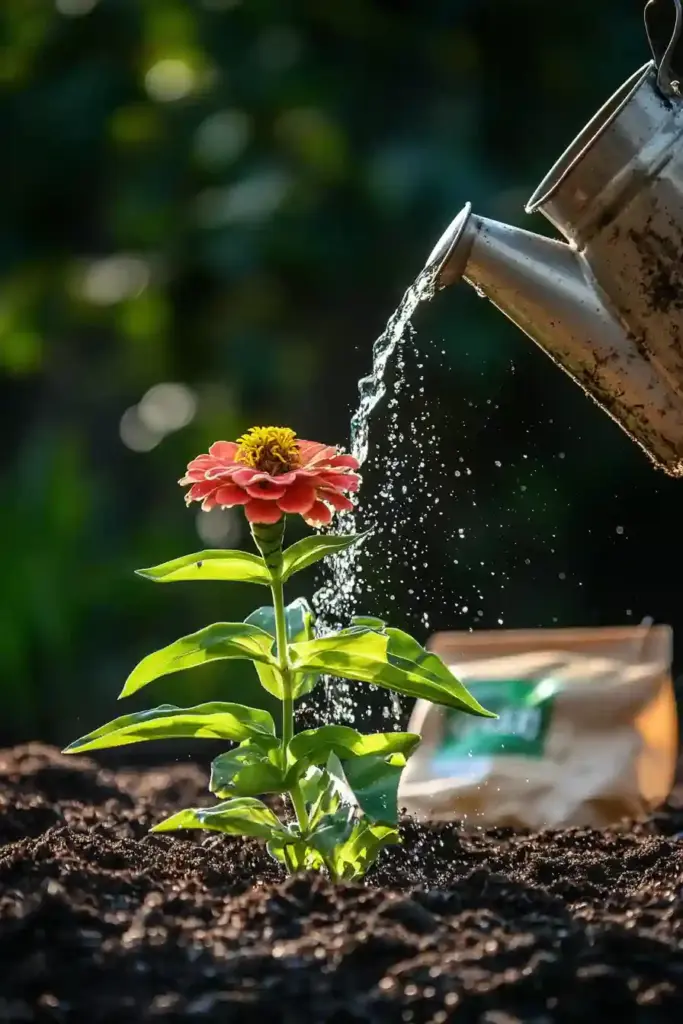
- Find the spent flower head — it’ll look faded, brown, or starting to dry out.
- Follow the stem down to the first set of healthy leaves.
- Cut just above the leaves using clean garden scissors or snips.
🚫 Don’t just pinch the flower off at the top — the plant won’t be triggered to grow new stems from there.
⏰ How Often Should You Deadhead?
- Check your zinnias every few days during peak bloom season.
- Late summer is prime time, so stay on top of deadheading for a continuous show.
With regular deadheading, your zinnias will reward you with nonstop flowers and a more compact, bushy plant. Coming up next — we’ll tackle common pests and diseases that can pop up in container-grown zinnias (and how to beat them).
🐛 Common Pests and Diseases in Potted Zinnias
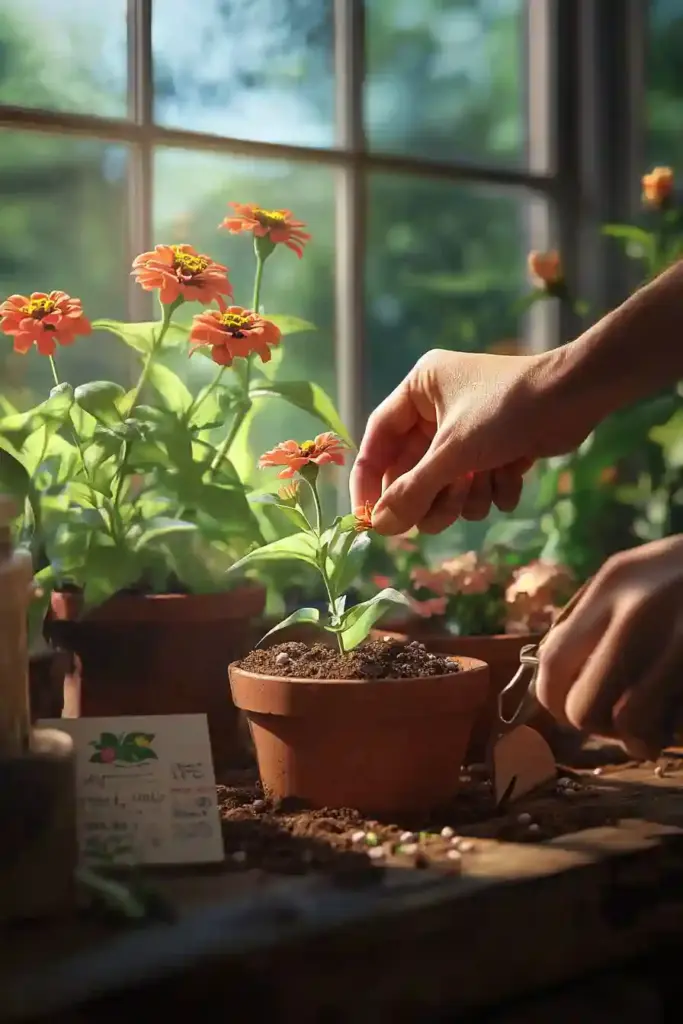
Zinnias are generally low-maintenance and resilient, but container gardening can occasionally invite trouble — especially if airflow is poor or moisture levels get out of balance.
🦠 Common Zinnia Diseases
Most zinnia issues are caused by excess moisture or poor circulation.
1. Powdery Mildew
- Symptoms: White, powdery coating on leaves and stems
- Cause: Overhead watering or humid, poorly ventilated conditions
- Fix: Improve air circulation, avoid wetting leaves, and remove infected foliage
2. Bacterial or Fungal Leaf Spot
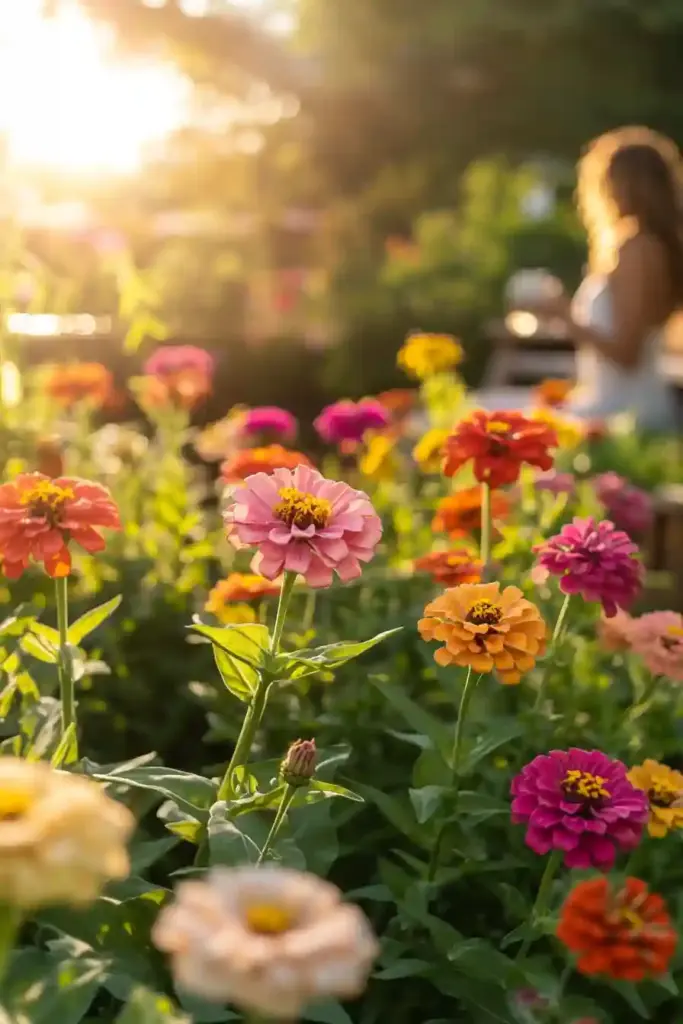
- Symptoms: Yellow or brown spots on leaves, sometimes with dark edges
- Cause: Water splashback or crowded planting
- Fix: Remove affected leaves, water at the base, and avoid overcrowding
3. Root Rot
- Symptoms: Wilting, yellowing, stunted growth
- Cause: Soil that stays too wet or lacks drainage
- Fix: Repot in fresh, well-draining soil and cut back on watering
✂️ Always disinfect your tools after removing diseased parts to avoid spreading the issue.
🐞 Common Zinnia Pests
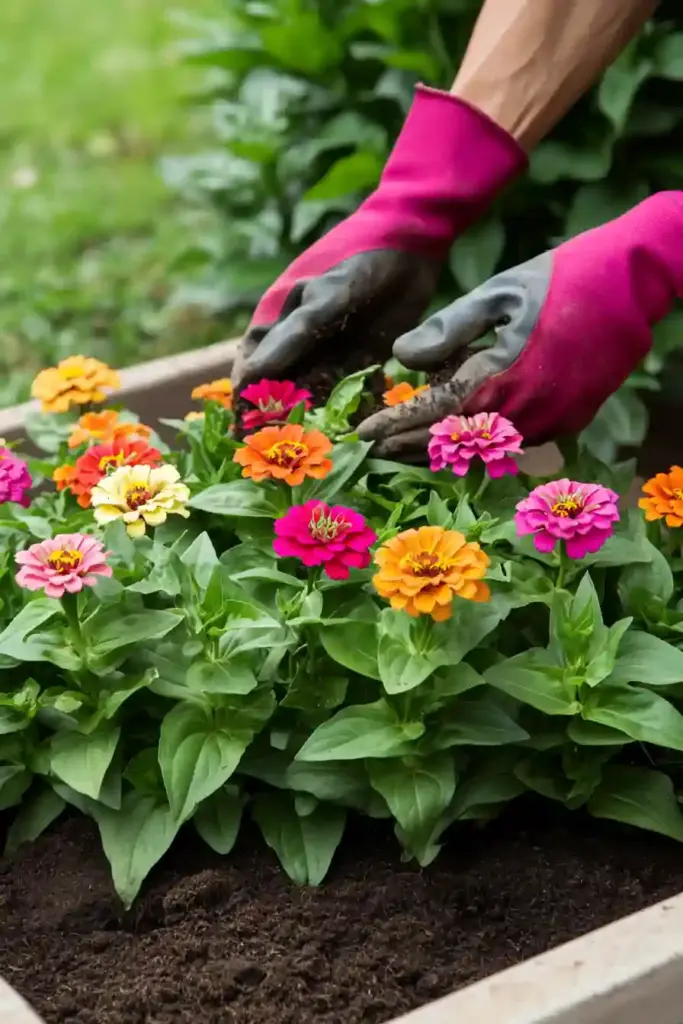
Zinnias are tough but can still attract unwanted visitors.
1. Japanese Beetles
- Signs: Ragged leaves and chewed flowers
- Solution: Handpick and drop into soapy water, or spray with neem oil
2. Aphids
- Signs: Sticky residue, curled leaves, or visible tiny bugs
- Solution: Spray with a mild soap-and-water solution or insecticidal soap
3. Spider Mites
- Signs: Speckled leaves or fine webbing
- Solution: Hose off plants gently or use neem oil to control
🌬️ Prevention Tip: Good airflow and avoiding excess moisture on leaves are your best defenses against both pests and disease.
Coming up next: the Frequently Asked Questions section to address common zinnia-in-pot dilemmas and curiosities.
❓ FAQ About Zinnias in Containers
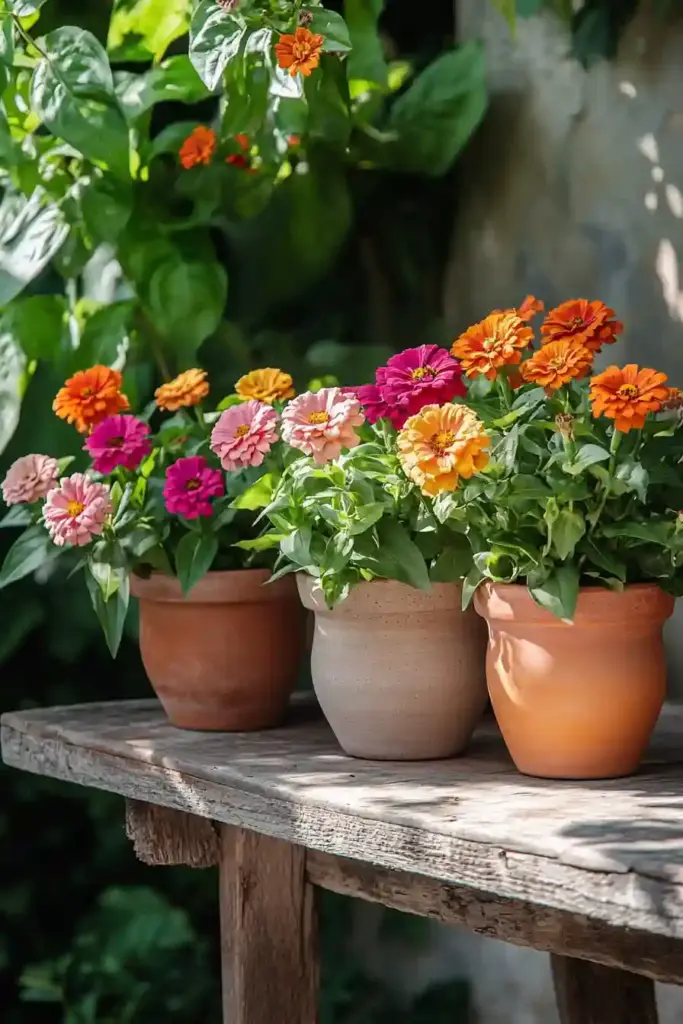
🌤️ Can Zinnias Grow in Part Shade?
Zinnias love full sun. They’ll tolerate some afternoon shade, especially in hot climates, but:
- Less sunlight = fewer blooms
- Too much shade = leggy growth and weak stems
If possible, place your pots where they’ll get 6–8 hours of direct sunlight daily.
⏳ How Long Do Zinnias Last in Pots?
Zinnias are annuals, which means they grow for one season — but that season can be impressively long!
- With proper care, they’ll bloom from midsummer until the first frost.
- Deadhead regularly and water consistently to extend their bloom time.
🌸 How Do I Get More Blooms on My Potted Zinnias?
To maximize flowering:
- Deadhead regularly (cut back to the first set of leaves)
- Ensure they get full sun daily
- Use a balanced flower fertilizer every 3–4 weeks
- Water deeply but allow soil to dry slightly between waterings
Zinnias are cut-and-come-again flowers — the more you cut or deadhead, the more they’ll produce!
🥀 Why Are My Potted Zinnias Dying?
A few common culprits:
- Overwatering or poor drainage → Root rot
- Not enough sunlight → Weak stems, no blooms
- Dense or compact soil → Restricts roots
- Pests or disease → Especially in humid or crowded conditions
Quick Fix: Repot in fresh, well-draining soil, move to a sunnier spot, and remove any damaged leaves or stems.
🌟 Conclusion: Enjoy Nonstop Blooms with Zinnias in Pots

If you’re looking for a vibrant, low-fuss flower that turns any patio or balcony into a burst of color, zinnias in pots are the perfect pick. With the right pot, a sunny spot, and a little regular care, these cheerful blooms will keep flowering all summer long — and then some.
Whether you start from seed or pick up a few nursery plants, the payoff is huge: zinnias bring beauty, attract pollinators, and fill your containers with effortless joy. Just remember the basics — good drainage, full sun, regular deadheading — and you’ll be rewarded with blooms for weeks on end.
So grab a pot, a packet of zinnia seeds, and let your container garden shine. You’ve got this! 🌞🪴
🌿 Love gardening inspiration? Follow me on Pinterest for bold plant ideas, tips, and seasonal color!
More Posts
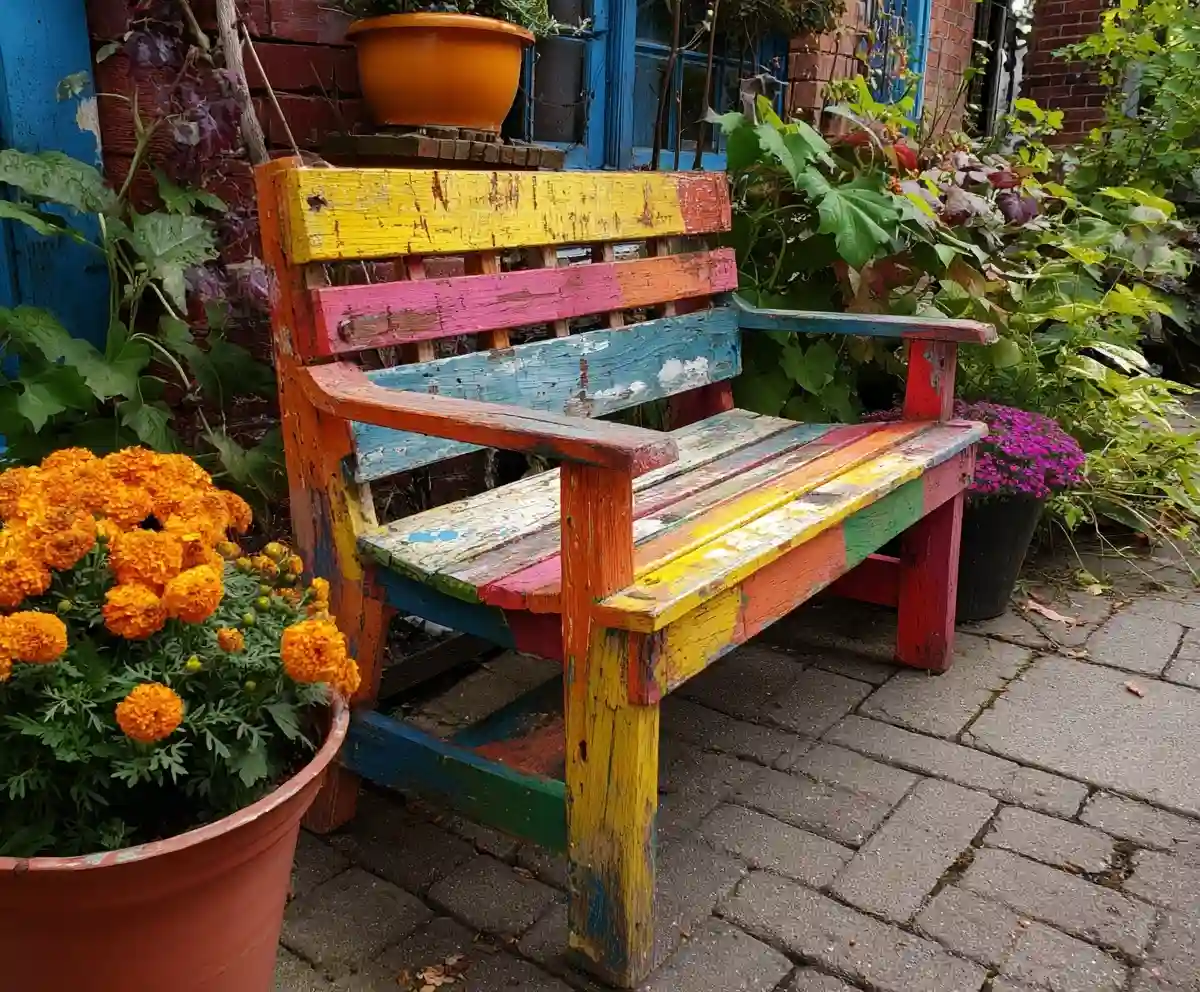
19+ Budget-Friendly Backyard Makeover Ideas
Backyard makeover ideas can turn even the most ordinary outdoor space into a warm, inviting retreat—without draining your wallet.
Read More →
21 Stunning & Simple DIY Clematis Trellis Designs
DIY clematis trellis designs are a beautiful way to blend creativity with function in your garden.
Read More →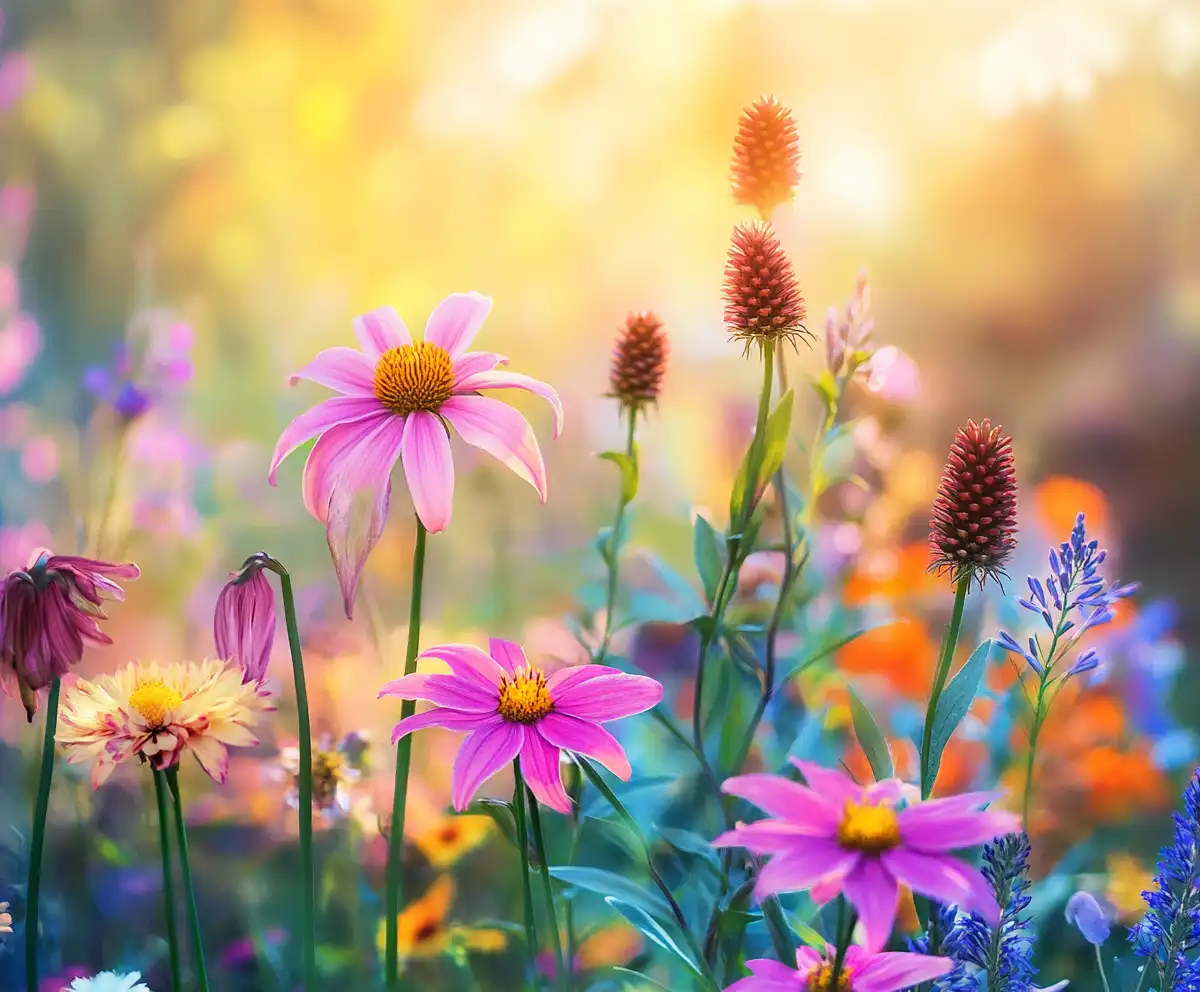
12 Full Sun Perennials That Bloom All Summer
Explore a selection of hardy perennials that flourish and bloom beautifully in full sun throughout the summer.
Read More →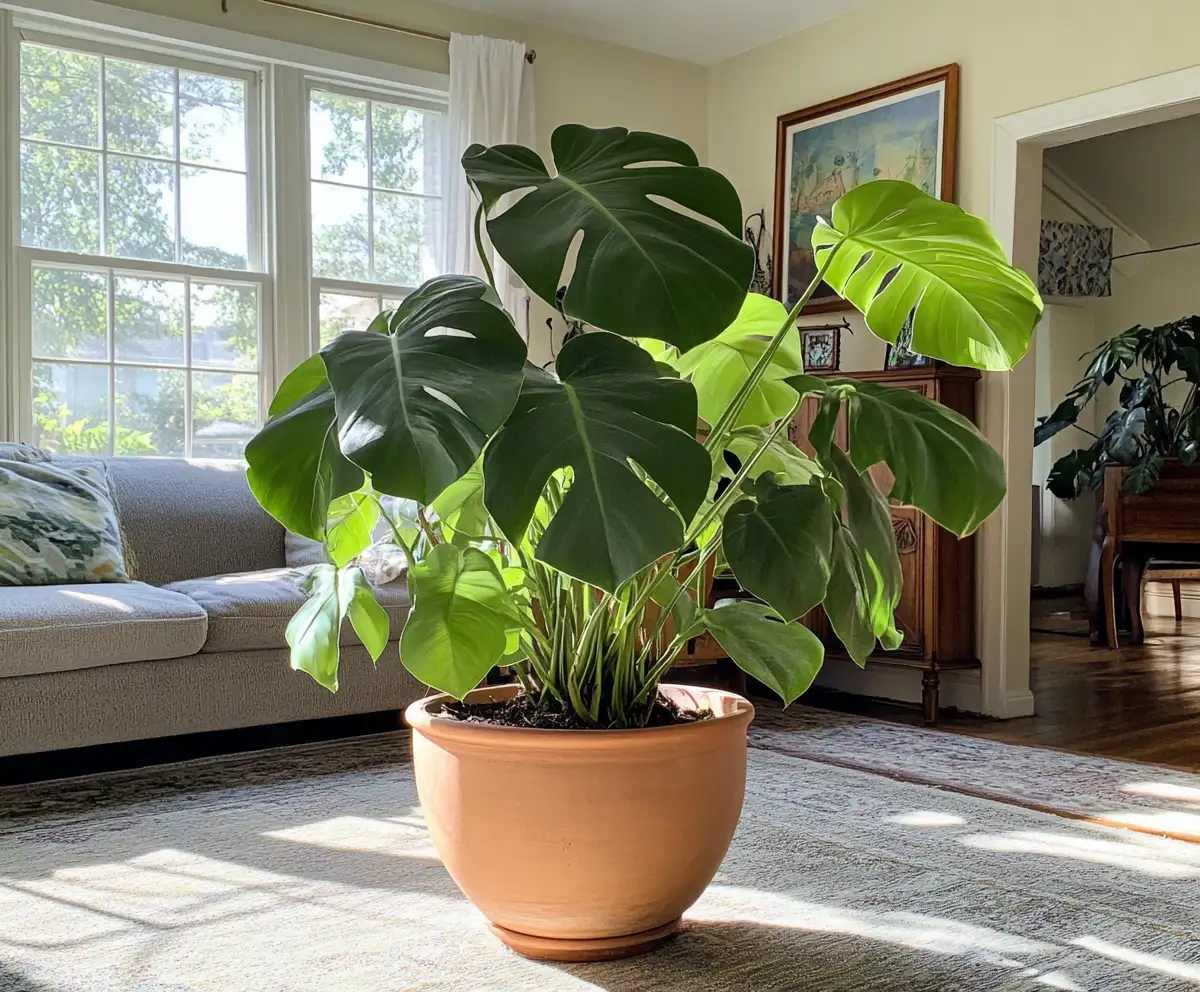
Houseplants for Living Room
Find the perfect houseplants to brighten and purify your living room while adding a touch of nature indoors.
Read More →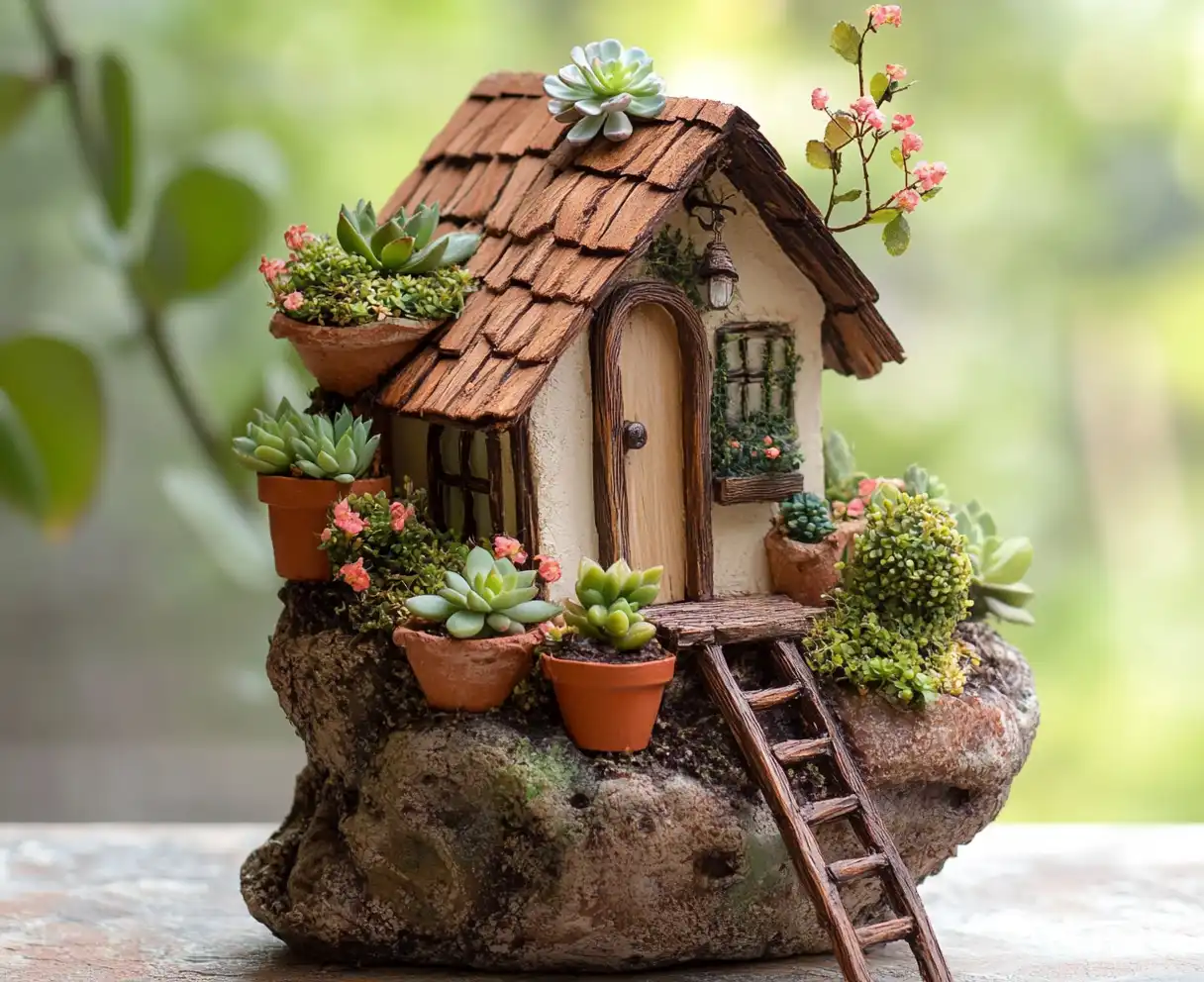
Backyard Play Area for Kids
Create a fun and safe backyard play area for kids with these inspiring design ideas and tips.
Read More →
Top Privacy Trees
Discover top tree varieties that provide natural privacy and enhance your outdoor space.
Read More →
